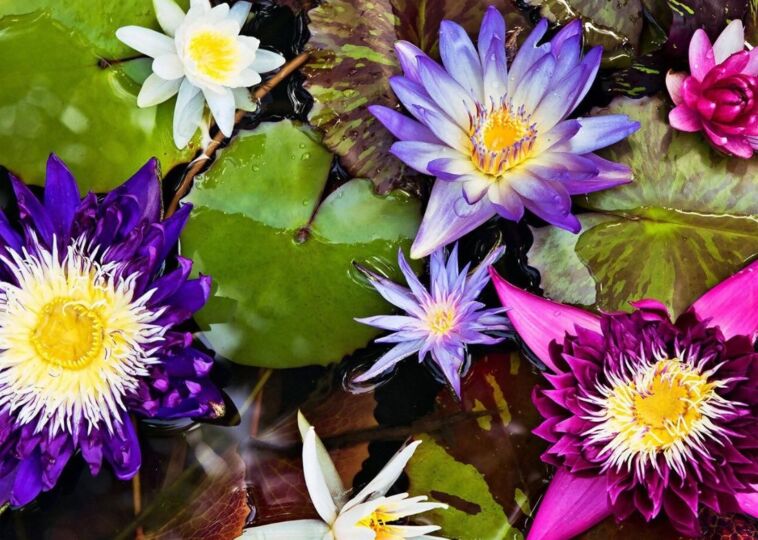Discover the 10 Most Beautiful Flowers Worldwide – Must See!

Contents [hide]
But with so many stunning varieties around the globe, how do we even begin to pinpoint which flowers are the most breathtaking? And on the flip side, what about those flowers that might not win any beauty contests?
Dive into the fascinating world of flowers and discover what makes the most stunning ones stand out and which might be considered the ugliest. It’s no easy feat to declare a single flower the most beautiful in the world. After all, beauty is incredibly subjective and deeply personal.
What makes a flower beautiful can vary dramatically depending on individual tastes, cultural backgrounds, and geographical locations. To make things easier, we often look at flowers with exceptional features- an extraordinary color palette, unique shape, or a captivating fragrance.
Cherry Blossom (Sakura)

Each year, thousands gather to admire the blossoms and partake in cultural events, making it one of the most celebrated spring festivals in the country. Why Cherry Blossoms are So Special. Cherry blossoms are indeed a marvel of nature. In Japan, the arrival of Sakura is more than just a seasonal change; it’s a deeply ingrained cultural event.
Families and friends gather under the cherry trees, enjoying picnics and appreciating the fleeting beauty of the blossoms. Cherry blossoms hold a special place in Japanese culture. The annual spectacle of cherry blossoms serves as a poignant reminder of the beauty and fragility of existence.
Whether you’re in Japan enjoying Hanami, the experience is a powerful reminder of the universal appeal of nature’s beauty and the bonds that connect. Cherry blossoms are more than just beautiful flowers; they symbolize friendship, cultural heritage, and the fleeting nature of life’s most precious moments.
Bird of Paradise

When you hear Bird of Paradise, you might picture a flamboyant tropical bird soaring through the skies. But in the botanical world, this name refers to an extraordinary flower that mirrors the stunning appearance of the bird it’s named after.
Native to South Africa, the Bird of Paradise, Strelitzia reginae, is an exotic gem that has captivated flower enthusiasts with its striking resemblance to a bird in flight. The Bird of Paradise flower is often dubbed the crane flower due to its striking shape and vibrant colors.
Together, these features mimic the appearance of a bird with its wings spread wide, a magnificent vision that evokes the beauty of tropical paradise. The plant’s long, lush green leaves add to the illusion, enhancing the flower’s resemblance to a bird in mid-flight.
Bleeding Heart Flower

That’s the magic of the Bleeding Heart flower. With its heart-shaped blooms and enchanting hues, it’s no wonder this flower captivates garden enthusiasts and lovers alike. The Bleeding Heart, scientifically known as Dicentra spectabilis, is a true marvel of nature.
These blooms are a delightful blend of pink and white, with the outer petals often showing a soft blush and the tips kissed by a touch of white. In a moist, cool climate, the Bleeding Heart thrives, adding a touch of elegance to any garden.
The flower’s name, Bleeding Heart, comes from its unique shape and how a small drop of water at its tip can resemble a tiny, bleeding heart. The Bleeding Heart flower doesn’t limit itself to just one color. These blooms are in various shades, including pink, red, yellow, and white.
Dahlia

If you’re a flower enthusiast, the Dahlia probably holds a special place in your heart. With an impressive variety of sizes, colors, and forms, the Dahlia flower offers something for everyone. One of the most remarkable features of the Dahlia is its incredible diversity.
Whether you’re looking for a small, charming bloom to complement a delicate bouquet or a bold, statement flower to stand out in a garden bed, Dahlias have you covered. Dahlias can brighten any garden or floral arrangement, from vibrant reds and pinks to soothing purples and oranges.
A little maintenance goes a long way to keep your Dahlias looking their best. What makes the Dahlia truly special is its combination of diversity, beauty, and ease of care. Its wide range of sizes and colors allows it to fit seamlessly into any garden design or floral arrangement.
Water Lilies

Water lilies are often hailed as the queens of aquatic flowers, and for good reason. Water lilies are not just a single species but a diverse family with around 70 types scattered across the globe. One of the most striking features of water lilies is their large, round leaves that float gracefully on the water’s surface.
They help regulate the temperature of the water beneath them, offering a cooling effect and reducing algae growth. The long, slender stems of water lilies anchor them to the pond or lakebed, allowing them to remain firmly in place while their beautiful flowers rise above the water.
Water lilies are known for their enchanting blooms, which open from spring to fall. Beyond their visual appeal, water lilies play a vital role in their aquatic habitats. Moreover, water lilies create a perfect environment for fish and other marine creatures. By supporting a variety of organisms, water lilies contribute significantly to the biodiversity of their habitats.
Gazania

Known for its dazzling daisy-like appearance, this flower, often called the Treasure Flower, brings a splash of color and a touch of elegance to any outdoor space. Native to South Africa, Gazanias have earned their spot as a favorite among gardeners and flower enthusiasts worldwide. Gazania flowers are like nature’s confetti: brilliant, celebratory, and impossible to ignore.
With their vivid hues ranging from fiery oranges and sunny yellows to passionate reds and soft pinks, Gazanias offers a kaleidoscope of colors that light up any garden. This flower is a true sun-lover, eagerly soaking up the rays and transforming them into a brilliant display of color.
Gazania is relatively low-maintenance and forgiving for gardeners looking to cultivate these eye-catching blooms, provided you meet a few critical conditions: This exposure encourages vigorous growth and ensures the flowers open wide, displaying their vivid colors. They tend to close their flowers in the evening and during cooler days.
Lotus

This is the essence of the lotus, a flower that rises above its environment to embody purity, harmony, and divine beauty. The lotus flower is renowned for its striking appearance, rich symbolism, and unique characteristics. As a sacred flower in Buddhism, the lotus represents purity and enlightenment.
The vibrant petals of the lotus are often multi-layered, creating a striking and symmetrical appearance. Each flower showcases a central head surrounded by delicate petals that float effortlessly on the water’s surface.
The pleasant aroma of a lotus adds another layer to its allure, making it a favorite not just for its looks but for its subtle yet captivating scent. The lotus flower is more than just a beautiful addition to a pond; it symbolizes resilience and purity.
Tulips

If you’re a flower enthusiast, you’ve likely heard of the Keukenhof flower garden in the Netherlands, an absolute paradise for tulip lovers. Spanning an impressive 32 hectares, this sprawling garden transforms into a vibrant sea of tulips every spring, showcasing millions of these spectacular blooms. Tulips come in virtually every color imaginable except for pure blue.
While most tulips feature a single flower per stem, some varieties boast multiple blooms on one stem, adding to their visual appeal. One of the most enchanting aspects of tulips is their ability to stand out in any garden or bouquet.
In the Keukenhof Garden, this ephemeral beauty is celebrated with a grand display that attracts visitors worldwide, eager to witness the tulips in full splendor. Tulips have a rich history that stretches beyond their botanical beauty. Today, tulips remain a beloved symbol of spring and renewal.
Orchid

Orchids are nothing short of a floral marvel. But what truly sets orchids apart and makes them so fascinating? Orchids come in a stunning array of sizes, shapes, and lifespans. Each species has distinct features, ensuring that no two orchids are alike.
One of the most intriguing aspects of orchids is their ability to mimic other natural forms. This particular species has flowers strikingly resembling a female bee, which is no accident. Orchids are also renowned for their vibrant and varied color palette. The brilliant colors attract pollinators, essential for the orchids’ continued survival and reproduction.
In their natural habitats, orchids can be found in various environments, from lush tropical rainforests to temperate woodlands and even arid deserts. Whether they’re thriving in the damp undergrowth of a rainforest or clinging to rocky surfaces in a dry climate, orchids continue to fascinate botanists and nature enthusiasts alike.
Rose

When you think of classic beauty in the floral world, roses are likely the first to come to mind. With over 100 species gracing our gardens and floral arrangements, roses are a testament to the incredible diversity and allure of nature’s creations. But what exactly makes roses so universally adored?
Roses are more than just flowers; they are symbols of elegance and romance that have enchanted people for centuries. From the delicate blush of a tea rose to the bold vibrancy of a hybrid tea rose, there’s a rose to suit every taste and setting. One of the most fascinating aspects of roses is their natural structure.
However, there’s an intriguing exception to this rule: This subtle difference highlights the remarkable diversity within the rose family. Roses come in an impressive array of colors, each carrying its symbolism and appeal. While the color spectrum of roses is broad, some notable absences exist. For example, true black and pure blue roses are non-existent.


